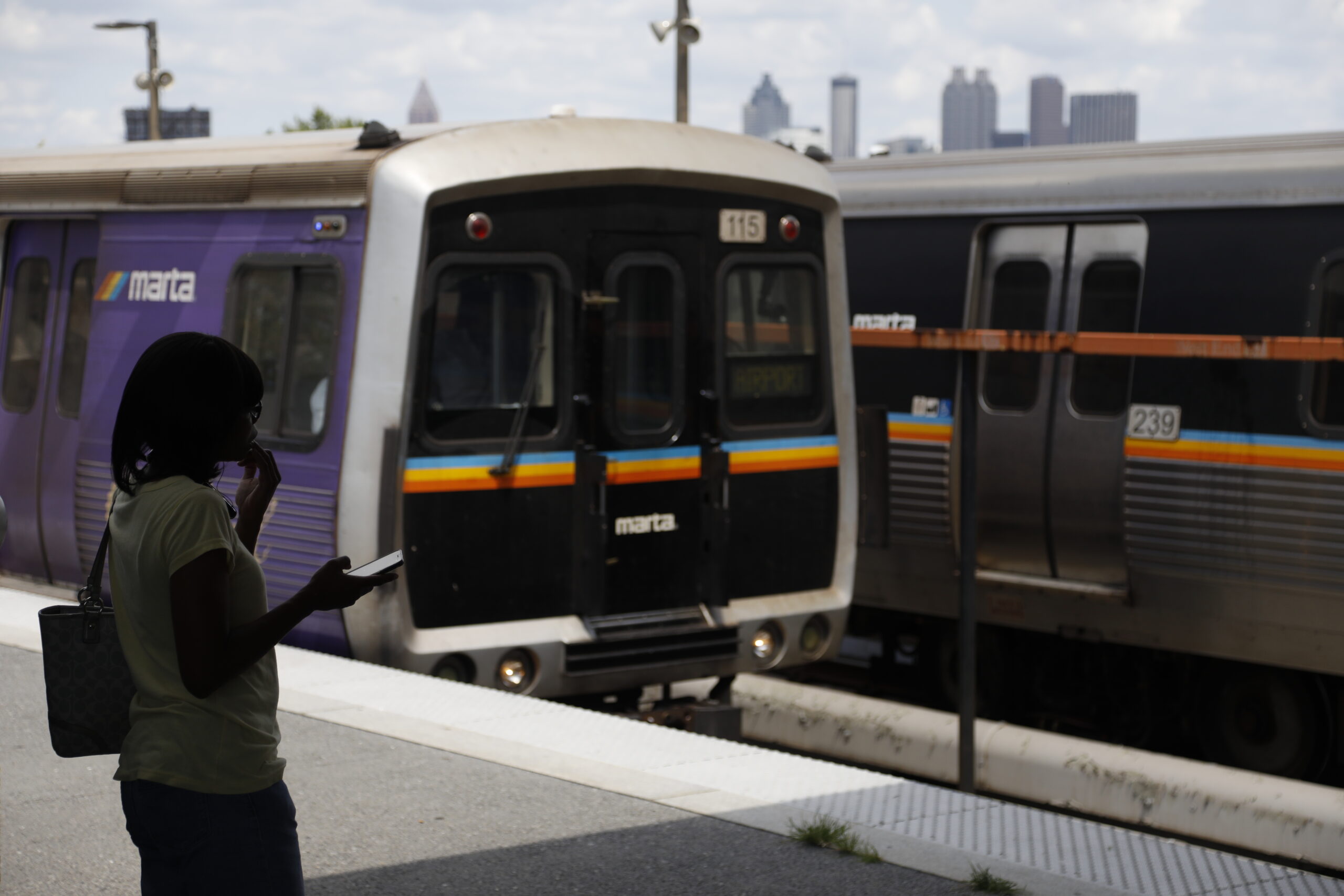MARTA Rings In 40 Years Of Service, Looks To Future

MARTA and HOPE Atlanta are coming together to help people who are experiencing homelessness and seeking shelter at MARTA stations.
Andrea Smith / AP Photo
It’s been 40 years since the first MARTA trains and buses linked together to provide transportation through the city.
The Metro Atlanta Rapid Transit Authority celebrated this milestone by holding a “Ride Back in Time”-themed festival and concert near Avondale Station last Sunday.
MARTA’s first train ride went from the Avondale Station to Georgia State in 1979. To celebrate the milestone, a commemorative ride took attendees on a reversed course, from Georgia State to Avondale. Dancers dressed in 1970s outfits welcomed riders on the platform.
“For the first 20 years, we were in the mode of constructing the modern heavy rail system and operating what we were building along the way, and operating our very, very important bus network. And then for the following … years, we’ve been maintaining and operating our system. And now we’re at a really, really important point…,” General Manager and CEO of MARTA Jeffrey A. Parker said.
MARTA has 38 rail stations and 550 active fleet buses, according to the transit authority’s 2018 fact sheet. It is the ninth-largest transit system in the U.S. and generates $2.6 billion in economic activity annually.
In June, MARTA’s board of directors approved an expansion plan timeline that includes 29 miles of light rail service, 14 miles of bus rapid transit and 22 miles of arterial rapid transit that will be added over time.
By 2025, a bus rapid transit line for the Capitol Avenue area, along with North Avenue Phase 1, is planned to be operational. Extending service of the Atlanta Streetcar, Atlanta BeltLine and the Campbellton Road area is also in the expansion plan.
“Atlanta is predicted to be the third fastest-growing metropolitan area in this country,” Parker said. “We’ve got to invest in increasing transportation, including public transportation, to allow that economic equality to continue to happen in the way it’s been happening in this region and the way it’s predicted to happen in the future.”
MARTA expansion has been met with backlash from some metro Atlanta residents. In Gwinnett County, a little over 54% of voters cast their ballot against a referendum to implement a sales tax for transit expansion projects.
Year over year, the average number of weekday ridership for bus and rail services has fluctuated up and down from 220,100 bus riders and 249,000 rail riders during FY10 to 151,400 bus riders and 208,300 rail riders in FY19.
Parker said it’s important to note that gas prices have dropped over time and parking is more accessible and affordable in the metro area.
“…As we look to build out our transit infrastructure, we’re really looking to support the phenomenal growth that we expect in this region,” he said.








